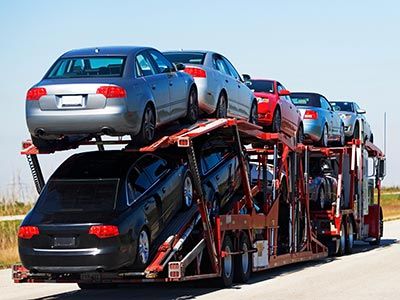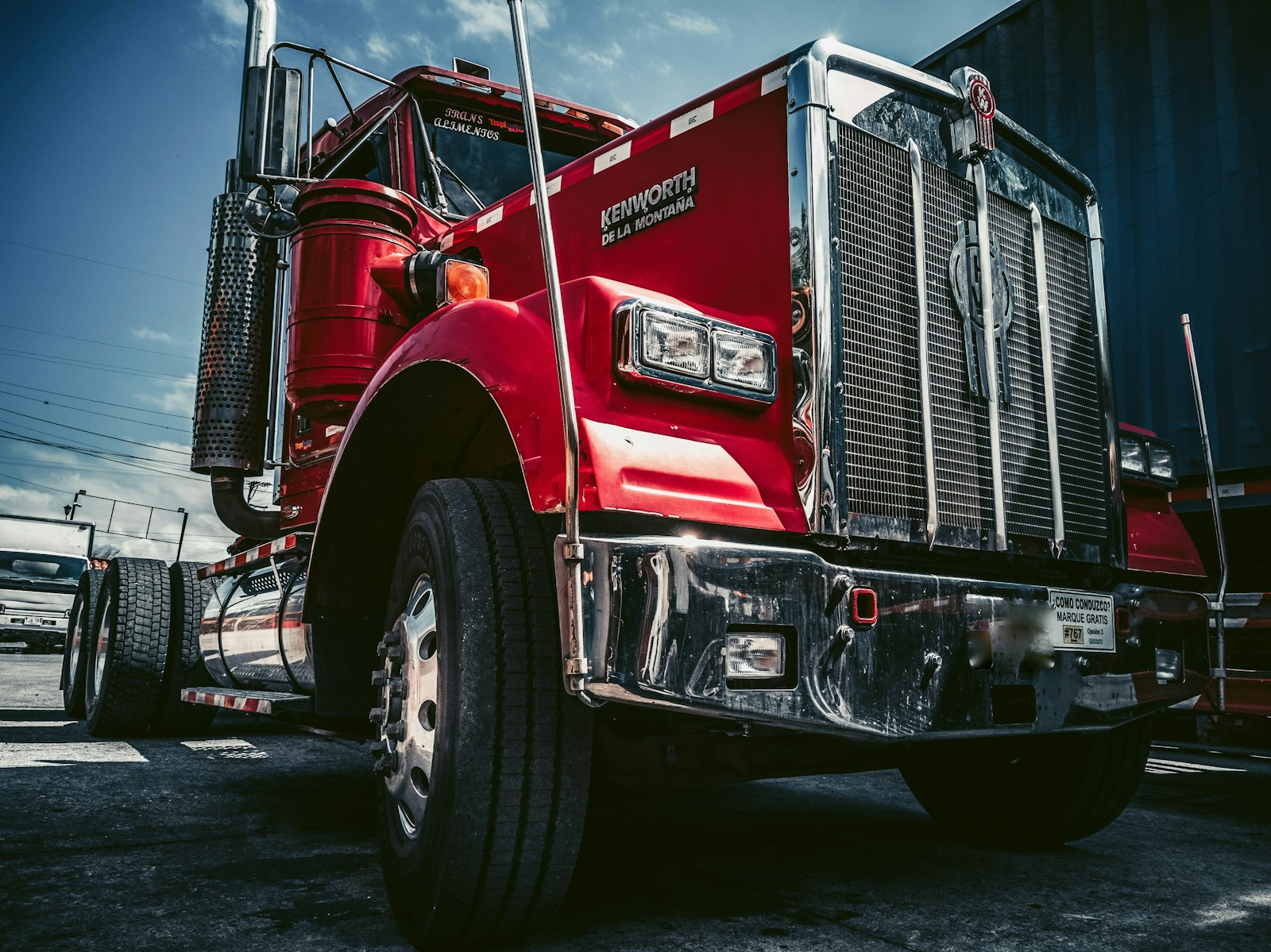The transportation of vehicles is a complex process that requires proper preparation and planning to ensure the safety, efficiency, and care of the cargo. Whether transporting personal vehicles during a move or shipping new cars and trucks across the country, there are important considerations that should be considered.
Proper vehicle transport requires an understanding of the various equipment, techniques, and regulations involved. Enclosed auto transport trailers, open car haulers, and specialty equipment like motorcycle trailers all have their specific uses. Operators need to be properly licensed and follow the rules for weight limits, hazardous materials transport, and tie-down procedures. Careful loading, securing in place, and padding of contact points are vital steps often handled by experienced drivers and dockmen.
Additionally, the importance of preparation prior to transport must be balanced when it comes to protecting vehicles and meeting regulations. Vehicles should be in good working order with no fluid leaks and contain no loose items. Special accommodations like loading inoperable vehicles require coordination beforehand.
By understanding the diverse specialized equipment used and regulations governing vehicle transport and properly preparing vehicles for shipping, both personal and commercial transport can be conducted safely. Overlooking these factors risks expensive damage and violations. However, those who thoroughly prepare people, processes, and vehicles before undertaking transportation will find it an efficient and incident-free endeavor.
For more detailed information on how to fully prepare your vehicle for transport and tips for choosing the right transport company, continue reading this guide. Proper preparation is the key to a smooth, damage-free shipping experience.
Understanding Vehicle Transport
The vehicle transportation industry provides diverse solutions for any situation:
- Enclosed Auto Transport: Vehicles are shipped inside an intermodal container on an enclosed trailer for maximum protection from road debris and climate. Most common for high-value luxury & classic vehicles. It’s more expensive but ideal for premium cars.
- Open Car Haulers: The most frequently seen trailer type, open car haulers transport vehicles stacked using tie-down straps & equipment. It has less protection than enclosed but costs less. They are used widely for typical vehicle shipping. Some models, like bi-level & tri-level, haul more vehicles per load.
- Specialty Equipment: Specialty trailers cater to transporting unique cargo like motorcycles, ATVs, limousines, RVs, and heavy construction equipment. Such cargo requires custom equipment and handling.
- Train & Ship Transport: Vehicles shipped long distances overseas or across countries are often transported using containers on rail lines & sea vessels before truck transport. Intermodal transport is essential for international shipping.
Ideal transport methods balance costs, timing needs, and protection levels. Assess journey types, vehicle values, and fragility when selecting optimal equipment.
What to Expect During Transport
Understanding the below key phases of vehicle transport sets informed expectations before shipping:
- Pre-Shipment Inspections: Documentation by drivers of any pre-existing exterior or interior damage through photos/videos and condition reports before loading vehicles.
- Securing Cargo: Vehicles strapped tightly at wheels with tie-downs, secured by blocks/braces and kept steady on trailers using air-cushion suspension for a minimum shift during transport.
- Transport & Tracking: Potential delays during loading, traffic jams en route, bad weather, etc. GPS trailer tracking options provide real-time transport visibility & ETAs.
- Post-Delivery Inspection: A similar inspection upon unloading at the destination by the receiver and driver noted any new damage sustained during shipment on the condition report.
- Contingency Plans: Reputable auto transport firms plan for accident repairs, severe weather delays & route interruptions through contingency routing, insurance, and transport partner networks. Pre-Transport Preparations
- Properly preparing your vehicle for transport is vital to ensure it ships safely and smoothly to the destination. This comprehensive guide covers recommended documentation, inspection checklists, operating procedures, and methods to secure your vehicle before the hauler takes it away. Follow these key steps for optimal vehicle shipping.
Essential Documentation & Procedures
Gather and complete these documents before vehicle pickup:
- Proof of Ownership: Have title or loan papers available to establish ownership for the transport company.
- Condition Report: The driver conducts external/internal pre-shipment inspection detailing existing damage with images/video and a condition report.
- Shipping Order: Transport orders with exact pickup location info, delivery address, vehicle details, and any special needs arrangements.
- Insurance Certificate: Supplemental shipping insurance paperwork beyond carrier coverage for high-value vehicles.
- Mileage Records: The current odometer reading was noted at pickup and compared at delivery to log mileage during shipping.
- Fuel Level: Top up the gas tank to around 1/4 full. Reduces vehicle weight variability that affects tie-downs and minimizes fire risks/leakage.
- Loose Objects: Remove antennas or secured loose external elements (e.g., hanging coffin plates) that can detach at highway speeds. Also, take out non-fixed interior contents.
Pre-Transport Vehicle Inspection Checklist
Conduct this inspection day before pickup:
- Fluid Levels: Top up engine oil, brake, transmission, and wiper fluids, as leaks can occur en route. Address any leaks beforehand.
- Battery Charge: Fully charged battery. Transport vibrations and environmental factors may drain the charge. A connected battery maintainer is ideal.
- Tire Pressure: Inflate tires to the recommended tire pressure levels mentioned on a placard or door frame as they deflate over time while in transit.
- Alarm & Anti-Theft: Disable car alarms. Lock/unlock signals can activate alarms during shipping and drain the battery.
- Garage Transmitters: Take out any garage door openers or transponders to avoid signal-based unlocking/opening of storage facilities en route.
With paperwork ready, vehicle fluids checked, and potential issues addressed per this checklist, you can feel confident handing off your vehicle to the transporter damage-free. Contact reputable enclosed auto shipping providers well in advance for smooth transport.
Step-by-Step Guide to Preparing Your Vehicle
Ensuring your vehicle ships safely requires methodical preparation beforehand per these key steps:
Cleaning and Detailing Your Vehicle
Thoroughly wash and detail your vehicle’s interior and exterior before transport:
- Remove dirt buildup on the body to enable noting any new shipping damage
- Clean the interior to prevent loose dirt from circulating and scratching surfaces in transit
- Store floor mats securely to prevent vibrational movement wearing carpets
- Document any unfixable existing damage via photos/video for the pre-shipment report
Securing Loose Parts and Accessories
Properly secure any loose elements with the potential to detach at highway speeds:
- Remove antennas, spoilers, and bike/ski racks not permanently fixed to the vehicle
- Check for loose trim and external decorative plates; attach securely or detach for shipping
- Secure hood and gas cap with secondary latches if just held on by worn-out latches
Checking Fluid Levels and Battery
Top up operating fluids and battery charge before transport:
- Fill engine oil, transmission fluid, brake fluid, and wiper fluid to prevent leaks
- Fully charge battery and connect battery maintainer to prevent charge loss in transit
- Ensure no leaks underneath and address any found – place cardboard underneath beforehand
Deactivating Electronic Devices and Alarms
Avoid battery drain or security signals activating alarms during shipping:
- Turn off the alarm system or disable automatic passive activation for transport
- Unpair phones and garage door openers not traveling with a vehicle
- Retract electronic vehicle detection mirrors to prevent damage when stacking vehicles
Fuel Level Considerations
Maintain 1/4 tank fuel level before shipping for safety and load balancing:
- High fuel level increases vehicle weight imbalance and fire risk in crashes
- Below 1/4 tank risks fuel starvation to engine accessories like power steering
- Add fuel stabilizer to prevent gas deterioration for long-distance shipping
With these steps completed beforehand, vehicle transport can proceed free of loose objects and potential issues while in transit. Your automobile is ready for safe and secure shipping to its destination.
Loading & Securing: Best Practices for Vehicle Transport
When your vehicle ships, proper loading and securing methods by the transport operator are crucial to ensure a damage-free journey to its destination. The way vehicles are handled, positioned, and restrained on the hauler can make all the difference in arriving safely without incident. Careful loading considerations and secure fastening techniques minimize risks during transport and give peace of mind that your precious cargo reaches its destination in the same pristine condition it left.
Tips for Safe Loading
Effective loading maximizes safety and space:
- Load higher ground clearance vehicles only on bottom levels of auto carrier trailers
- Distribute vehicle weight evenly from side to side, front to back for stability
- Stack vehicles by size/weight – largest and heaviest at the bottom
- Handle non-running vintage vehicles with towing equipment to load onto transport
- Carefully drive vehicles straight into assigned deck spots to prevent exterior damage
Ensuring Secure Fastening
Effective restraint methods restrict movement in transit:
- Wheel straps with integrated metal hooks tightly tie down both front and rear wheels
- Tire chains add lateral stability against crosswinds on taller vehicles like SUVs
- Soft ties prevent metal ratchet strap contact from rubbing painted surfaces
- Corner braces secure top vehicles to side rails, limiting side-to-side motion
- Rubber blocks cushion contact points between vehicles, preventing paint chips during shifts
Confirm vehicles don’t wiggle when shaking from corners. If you notice anything like that, alert the driver to re-tighten the straps immediately. Avoid overloaded carriers placing vehicles too close. Your attentive inspection ensures safe fastening, promising damage-free delivery of your precious cargo at the journey’s end!
Final Vehicle Handover: Checks Before Releasing to Transporter
The last things to cover when releasing your prized automobile to a vehicle shipping company include:
Final Inspection & Documentation
Conduct a final walk-around confirming operating conditions plus paperwork:
- Check fluid levels again after test-driving vehicle post-preparation
- Match markings on tires to orientation documentation if balancer/force variation mattered
- Fill out any post-test drive paperwork like updated mileage and fuel gauge readings
- Complete the final bill of lading draft, noting any new damage after cleaning
- Attach custom instructions card for specifics – alarm code, charging port location, etc
Thorough paperwork protects you in case of disputes later. Photograph any existing minor damage for potential claims, too.
Handover to Transport Company
Physically releasing the vehicle:
- Ensure you have copies of all transport documents from the company
- Get driver contact info in case clarification is needed later
- Request transport ETA and tracking details to monitor progress
- Obtain the dispatched driver’s name and contact when available
Don’t leave valuables, non-fixed electronics, or hazardous materials. Finally, exchange vehicle keys for paperwork, concluding a smooth handover! Stay engaged during transit and inspection upon delivery.
Monitoring Your Vehicle During Transport
Proactively tracking your vehicle shipping status provides peace of mind. Know who and how to reach out in case issues arise, too.
Tracking and Communication
Actively monitor transport progress through:
- GPS Vehicle Tracking: Modern enclosed trailers feature real-time GPS locator beacons, allowing transport companies to monitor location and route from pickup to drop-off—request access to follow along online.
- Status Calls: Preferred comms channel to get updates directly from the trucking company’s dispatch team on transport milestones and expected time of arrival.
- Driver Check-Ins: Some owner-operators directly provide customer contact during the multi-day journey to communicate issues promptly if they arise. Don’t hesitate to reach out.
Open communication channels make the shipping experience transparent so you know what to expect.
Addressing Concerns During Transit
Should an issue arise during shipping, like delays or damage notices:
- Clearly document details of concern – take photos, write down facts & request written transport inspection reports/findings. Don’t simply voice complaints. Ensure you can support claims.
- Review insurance, liability policies, and incident protocol to know coverage and process for transport-related damage or losses.
- Escalate politely to manager levels as needed if frontline staff is unable to address satisfactorily. But allow reasonable comments to lag, given that drivers are on the road focused on safe driving.
The final step after your vehicle shipping journey is vehicle pickup from the destination terminal and damage inspection. Follow these inspection and documentation tips before accepting delivery:
Receiving Your Vehicle: Post-Transport Inspection Tips
- Thoroughly compare new delivery condition reports detailing any damage post-transport to initial pre-shipping condition images/notes.
- Walk around the vehicle closely, checking paint, metalwork, lights, underside, wheels, and glass for new scrapes, scratches, scuffs, or major damage.
- Start the vehicle engine and test basic functions – lights, horn, brake pedal pressure, steering wheel stiffness, and other controls ensuring proper operation.
- Note issues before signing off and accepting vehicle return from carrier no matter how small – easier to claim transport damage coverage.
Carefully inspecting paint lines in good daylight catches subtler cosmetic defects the driver may overlook in a quick once-over. Take your time with this process, and allow adequate vehicle handover time.
What to Do In Case of Damage:
- Document damage with date/time-stamped photos pointing to affected areas and describing the observable impact.
- Have the transportation provider countersign new damage on the inspection report and provide written findings on the cause.
- Begin the claim filing process as per insurance policy, either through the carrier or your supplemental coverage within defined claim submission deadlines.
- For substantial damage disputes, be prepared to obtain professional loss assessments detailing repair recommendations with cost estimates from mechanics.
With photos, condition reports, and findings from transport providers clearly capturing damage origins, insurance claim processes progress smoothly despite headaches from seeing your vehicle marred. However, staying diligent with documentation prevents drawn-out disputes over accountability.
Additional Tips and Best Practices
Here are the key steps to choose the right auto transport service provider:
Verify Credentials & Certifications: Look for DOT registrations, FMCSA operating authority, CARB compliance, and BBB accreditation that show legitimate operations and legal authority to provide interstate transport services.
Check Company Safety Ratings: Search the FMCSA database for safety ratings in areas like vehicle maintenance, crash records, and insurance coverage that indicate safe transport operations. Companies with below standards pose great risks.
Read Multiple Customer Reviews: Review past customer feedback on Google, Yelp, and TransportReviews.com for consistent levels of service quality, responsiveness, damage rates, and complaint resolution trends from multiple outrages – not just company testimonials. Identify common negatives.
Compare Binding Quotes: Get full-service quotes from at least three top-rated transporters detailing exact pricing for vehicle haul method, pickup/drop-off, timing commitments, and all accessorial fees disclosed upfront before legally binding services. Lowball bids often risk shortcuts. Consider enclosed carrier options for lower damage risks on valuable vehicles worth protecting against shipping expenses.
Interview on Operational Details: Discuss operating practices with sales representatives, like driver vetting, securing methods, and contingency planning for accidents/delays to gauge responses indicating structured processes and controls, ensuring safe, monitored shipping operations.
Conclusion
Shipping vehicles introduces risks if not done properly. However, adequate preparation, understanding of transport processes, and proactive monitoring ensure the safe, smooth delivery of your automotive investments to their destination intact.
We covered a lot of ground on the vehicle transport process. In review, remember to thoroughly inspect and prepare vehicles for shipment by securing loose elements, checking fluid levels and battery charge, selecting reputable enclosed carriers vetted on credentials, reviews, and safety ratings, and completing documentation like condition reports, transport orders, and supplemental insurance, actively track vehicles in transit and escalate professionally if issues emerge, and closely inspect vehicles at delivery terminals before signing off and accepting back after the journey.
What matters most? Crossing these basics off the list – ready both yourself and your vehicle knowing what to expect, document important details like pre-existing damage in writing and photographs, screen providers thoroughly – cheapest transport quotes languish vehicles, and monitor shipping status end-to-end until safely claimed back.







